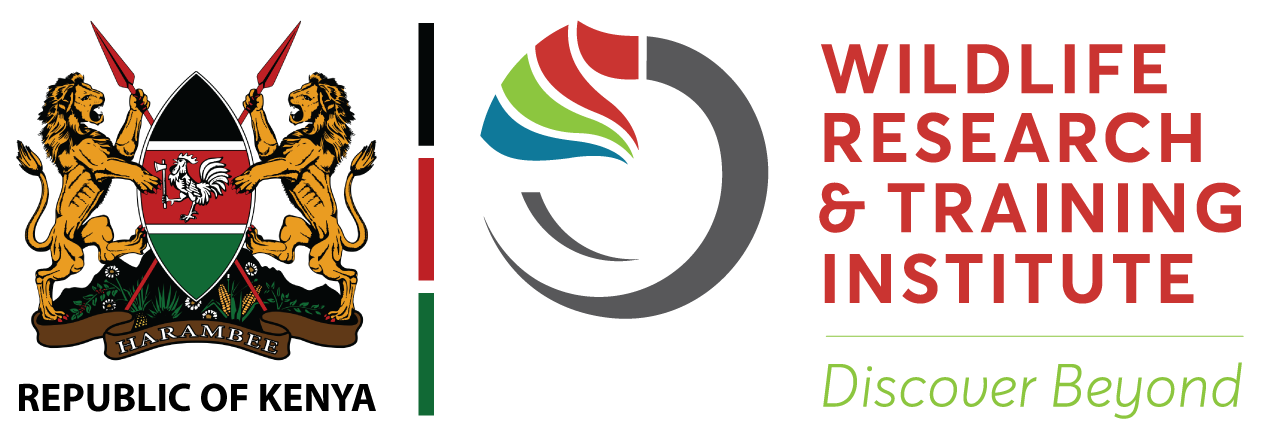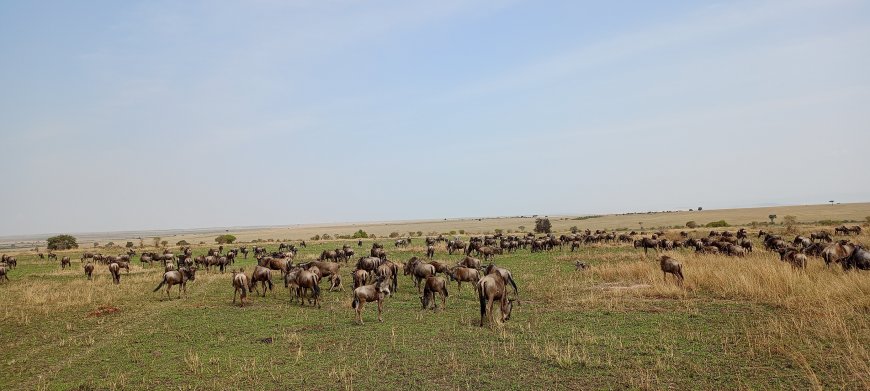 Wildebeests at the Mara National Reserve
Wildebeests at the Mara National Reserve
By Thuku Kariuki and Daniel Furnad
Kenya’s National Wildlife Census is currently underway in the Masai Mara Ecosystem, amid concerns over declining animal populations.
This project aims to gather vital statistics on species numbers, locations, and trends, which will help inform future conservation efforts.
Accurate data on wildlife will guide the allocation of resources, ensuring that critical areas receive the necessary attention and funding.
The initiative has begun in the high-profile Masai Mara National Park, but phase one will also cover additional areas such as Ruma and Lake Nakuru National Parks, Mwea National Reserve, and Solio Conservancy. Further phases will extend to ecosystems like Amboseli-Magadi, Coastal marine mega-fauna, and Athi-Kapiti.

Wildebeests and zebras at the Mara National Reserve
Dr. Joseph Mukeka, the principal research scientist at the Wildlife Research and Training Institute, expressed his concern over the rumored decline in animal numbers.
“We just want to understand why the numbers are behaving the way they are. We want to see whether the numbers have increased or decreased, and if they have decreased, we want to relate it to any particular reasons,” he said.
Climate change, which affects ecosystems’ ability to sustain various species, could be one factor. Human-wildlife conflict is another potential cause. Scientists are also vigilant for pests and diseases, some of which can spread from neighboring countries. The specific species counts and animal locations could provide clues to these underlying issues.
Stephen Ndambuki, another scientist involved in the survey, is in charge of the Masai Mara area. He is a front-seat observer for data collection and also a trainer on wildlife censuses and surveys.

Lions resting at Ol Kinyei Conservancy
“We have different kinds of species that we are counting, from elephants to Grant’s gazelles,” Ndambuki explained.
“We are also documenting human activities, including settlements and their nature—whether permanent buildings or semi-permanent structures like manyattas from the Maasai culture.”
Dr. Mukeka further elaborated on the use of the collected data: “Once we get the data, we can identify problem animals, like elephants and zebras, which sometimes raid farms. This information helps in deploying resources, such as community rangers, more effectively.”
Several government agencies are participating in this study, including the Kenya Wildlife Service (KWS) and the Ministry of Tourism and Wildlife. KWS rangers are at the frontline in the fight against poaching and work with communities to coexist with wildlife.
The service also provides medical care for injured animals and responds to other health issues. The Ministry is concerned with how tourists interact with wildlife, which is a significant aspect given that half a million visitors come to Kenya annually for safaris. Another partner, the Tourism Promotion Fund, also plays a critical role in this initiative.
The census is supported by many private partners, mostly conservation organizations like the World Wide Fund for Nature, Big Life Africa, Masai Mara Conservancies, Born Free Foundation, Soils for Africa’s Future, and the Giraffe Conservation Foundation. A decline in wildlife populations would undoubtedly alarm these organizations, as they have active programs to protect various species.
The last National Wildlife Census, conducted in 2021, provided results from 21 different ecosystems. It reported increases in populations of elephants, giraffes, and buffalo, while also noting significant movements of species due to factors such as livestock encroachment into key wildlife habitats like Laikipia-Samburu-Meru-Marsabit, Tsavo, Maasai Mara, and Lamu-Lower Garissa. This encroachment poses problems by increasing competition for resources like water, space, and forage.
Following the 2021 census, several recommendations were made. One was to conduct national counts every three years. There was also a call for immediate budget support to assess the status of species threatened by illegal trade and bush meat, including pangolins, dik-diks, and gazelles. The census also highlighted the need for more data on species not adequately covered, such as leopards, small carnivores, and non-human primates.
The report recommended securing and expanding habitats for existing rhino populations and implementing recovery plans for endangered species like the black rhino, mountain bongo, roan antelope, and sable antelope. These efforts aim to preserve and restore species at risk of extinction.
Technological advancements since the last survey have improved the accuracy of data collection. However, much human skill is still required from both observers and pilots conducting aerial surveys.
“Aerial surveys are really challenging exercises. They are resource-intensive, requiring many personnel and careful management. We are using seven aircraft, which is also a significant logistical undertaking,” Dr. Mukeka explained.

Eephants grazing at The Maasai Mara National Reserve
Mr. Ndambuki highlighted the importance of specific conditions for accurate data collection.
“The aircraft must maintain an average speed of 180 kilometers per hour and a height of 300 to 350 feet above ground. Observers identify and estimate numbers of animals, such as herds of elephants, while noting their species and other relevant details,” he noted.
The scientists involved emphasize the importance of maintaining balanced ecosystems, acknowledging the roles of all species, from insects to large mammals. Despite the technical nature of their work, there is a personal connection to the wildlife they study.
Ndambuki shared, “Elephants are my favorite animal. They are very intelligent and have complex social networks. Observing their communication, sometimes referred to as the ‘Elephant Dance,’ feels almost superhuman, although we can’t fully understand their language.”
The first phase of the census will continue for the next six months. The second phase will begin in early 2025, covering the remaining parts of the country, and is slated for completion by June of next year.
Updates will be available on the Wildlife Research and Training Institute’s website, and a detailed report from the Ministry of Tourism and Wildlife is expected around mid-2025. This extensive undertaking is crucial not only for the conservation of wildlife species and their ecosystems but also for the livelihoods of Kenyan citizens living alongside these wild neighbors.
Credit :https://storyspotlight.co.ke/national-wildlife-census-2024-to-benefit-humans-and-animals

